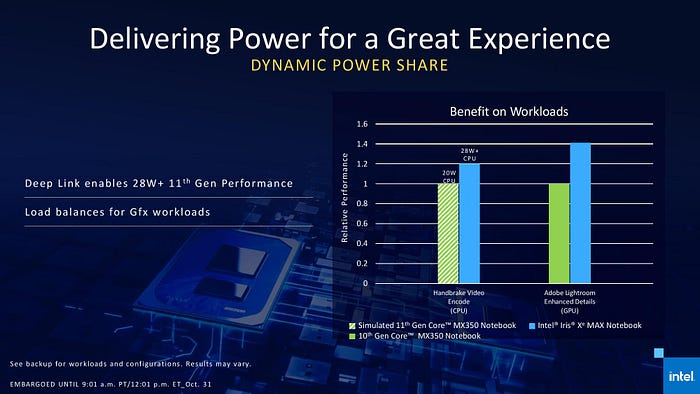All You Need To Know About Intel’s Xe Max Graphics

Intel, on October 31st, has launched his new Xe Max Graphics in China. They’ll first appear in Acer Swift 3x, Dell Inspiron 15 7000 2-in-1, and Asus VivoBook Flip TP470. These laptops will come to the United States in the coming weeks.
- Graphis Capacity 4GB: 68 GB/s
- Lithography10nm: Superfin
- Frequency: 1.65GHz
- Execution Units: 96
- Graphics Memory Type: LPDDR4x
- PCI Express: Gen4
- Medida: 2 Multi-Format Codec (MFX Engines
- Number of Displays Supported: 4
- Graphics Features: Variable rate shading, adaptive sync, Async compute (Beta)
- DirectX Support: 12.1
- OpenGL Support: 4.6
- OpenCL Support: 2

The company is aiming for the Xe Max laptops at content creators. Intel is using its ownership over both the Tiger Lake CPU and the discrete GPU in a feature called Deep Link, combining the processing with a software framework to boost performance.

Intel Iris Xe (iGPU) and Xe MAX (dGPU) are practically the same GPU so it's not surprising that Intel wanted to find a platform technology that would allow them to pool their resources and beat out a competitor. Intel Deep Link is the name of that technology.

Intel Iris Xe MAX GPU gaming and AI benchmarks
No announcement would be complete without some first-party benchmarks and Intel does not disappoint on this count.

The Intel Iris Xe MAX notebook easily beats out NVIDIA’s MX350 in 8/10 scenarios given in this benchmark. I also appreciate the fact that it looks like Intel has tried not to cherry-pick benchmarks and give a few examples where the NVIDIA MX350 beats the Intel Xe MAX solution like Borderlands 3 and Gears Tactics. However, Intel Iris Xe MAX GPU is seen to offer more consistent performance throughout the gaming tiers and destroys the MX350 in some heavy AAA titles like Metro Exodus. Since it can achieve 30+ fps on most AAA titles in a low-medium setting, I would say this is the first entry-level gaming solution from Intel in years.

